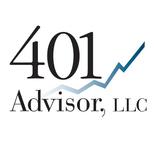 Author: Bill Deshurko, 401 Advisor
Author: Bill Deshurko, 401 Advisor
Covestor model: Dividend and Income Plus
Disclosures: None
Now that we are in the post DCLD (Debt Ceiling Limit Debate) era, it’s probably a good idea to assess the portfolio, as fundamentals may actually start to matter going forward. The most recent ISM report was absolutely dismal, and on the heels of Q1 GDP revised downward in late July, this does not bode well for the US economy. The only bright spot is that despite the GDP figure over the past year, corporate earnings have grown strongly. So we have to wonder, do we now revert to the mean with lower earnings growth, or continue to power forward?
Whichever way the economy blows, I feel our Dividend and Income Plus portfolio is well positioned. As of August 1, we are 85% invested and 15% in the money market, or “cash” position. This gives us a little dry powder to adapt as we move forward.
Our holdings have generally raised dividends over the past year, are generating healthy cash flows, and should be able to at least maintain current dividends in a slowing economy. While we’d like to keep our holdings long term, the fact is that several holdings are benefactors of a low interest rate environment. If we see any upward bias in interest rates, we will quickly reassess our holdings. However, with the recent dismal economic data, we do not see rising interest rates as a threat to our portfolio in the near to mid-term.
This leaves our only likely policy question for August to be, what to do with our 15% cash position? If the market can continue to muddle along in the trading range established at the beginning of the year, we’d like to add the SPDR Lehman High Yield Bond ETF (NYSE: JNK) to the portfolio. A 10% position in JNK would increase the portfolio yield significantly. If the market goes below support of around $125 for SPY, then we will likely hedge the portfolio with a 10% position on a short, or leveraged short ETF.
In June, according to our published Covestor risk report, our portfolio had a Beta of .33, which was the result of both a lower volatility than the S&P (daily volatility of 0.46 for the portfolio vs. 0.87 for the S&P 500) and a correlation to that index of just 0.62. We’d like to keep our Beta at .5 or better (lower), so any purchase will be prioritized based on our projection of it adding stability to the portfolio. A higher portfolio yield will be considered a bonus.


